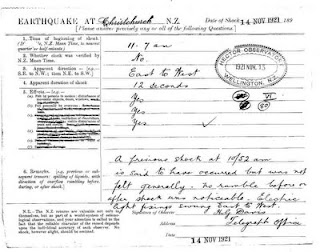I recently traveled up to Auckland to speak at the annual 'Planning for a volcanic crisis' short course - this is a two day course designed for people involved in all aspects of natural hazard management, emergency managers, local council and planners etc. Auckland is a great place to hold this course as it is built upon a volcanic field made up of over 50 separate volcanoes!
 |
| Volcanoes in NZ |
There are three types of volcanoes in New Zealand:
*Cone eg. Ruapehu and Egmont,
*Caldera eg. Taupo,
*Volcanic field eg. Auckland and Northland,
You can find more info on the different types of volcanoes
here .
In Auckland each eruption has occurred at a different location, with a single 'hot spot' of magma about 100km below the city, this means that any new activity will come from a different area - not one of the existing volcanoes. Today most of these volcanoes have been quarried, made into parks or been built on.
The field will probably erupt again as overseas examples show that volcanic fields can last for a very long time (over 1million years) and the Auckland field is only around 250,000yrs old - if it helps volcanic fields typically produce small
infrequent eruptions compared to the other types. You can get more information, and see how GeoNet monitors the Auckland Volcanic field
here
 |
| Islington Bay |
The last eruption in Auckland was about 600yrs ago at Rangitoto Island, we headed over on a ferry to check it out! We had great weather for the trip as well!
Rangitoto Island was formed during two eruptions, 600 and 550years ago, it is 260m high and can be seen just North-East of Auckland city. Thanks to DoC Rangitoto is pest free and also the home to the worlds largest Pohutukawa forest!
You can see various neat geological features on the island, and even explore lava tunnels. These are formed from paehoehoe lava flows, where the exterior cooled and crusted over creating a tube that allowed the molten lava within to continue flowing, as the lava flow decreased at the end of the eruption, these tunnels were left behind. (if you visit take a torch, sturdy shoes and don't think of wetas!!)
A video of some of the sights below...
Are you prepared?
Get Ready, Get Thru




















































